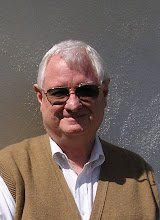Faces In The News FORBES 19 DEC. 08
Who's Under The TARP?
Richard C. Morais, 12.19.08, 12:20 PM EST
The little known but well-regarded Ennis Knupp is helping create systems for the bailout fund.
Designing the inner workings of the Troubled Asset Relief Program, now extended to help General Motors and Chrysler, is a Herculean task, but it's being done by pint-sized designers. Ennis Knupp & Associates, a small investment consultancy based in Chicago, has been hired by the U.S. Treasury to create internal investment controls and management systems for the bailout fund.
Ennis Knupp's $2.5 million TARP contract, signed in October, claims it must do everything from developing and maintaining TARP's "investment policies," to evaluating the government’s asset managers and assisting in their oversight. The Government Accountability Office audited TARP in December, and said the Treasury did not have enough monitoring procedures in place over its growing, $700.0 billion portfolio of assets. The agency said TARP needed to become more transparent, establish an "effective management structure" and "an essential system of internal control.”
Six core consultants from Ennis Knupp, a 122-person firm, are now quietly working on the assignment, and while they will not discuss the details of their TARP work, few had previously heard of the downtown Chicago firm being granted so much power and prestige by the U.S. government. "Nobody that actually works in the mortgage biz [sic] in either the primary or secondary markets really has much of a read on Ennis Knupp, let alone having ever heard of them,” observed Housingwire.com, which tracks developments in property and financial markets.
In 1970, the firm’s founders, James Knupp and Richard Ennis, used to run an investment consultancy at A.G. Becker. "Everyone had conflicts in those days. That just didn’t seem right to us," said Richard Ennis. The two founded their eponymous firm in 1981, and spent the next two decades quietly building an outfit that only sold conflict-free advice.
Jim Knupp retired and in 2000, Chairman Richard Ennis asked former alum, Stephen Cummings, to come back and run the shop. Cummings promoted talent and added research in private equity, real estate and “opportunistic strategies.” Assets under advisement that stood at $190 billion in 2000 have since quadrupled to $820 billion. The firm is today owned by 29 senior partners charging up to $625 an hour for their advice.
Ennis Knupp’s 160 institutional clients include GE Healthcare, the California State Teacher’s Retirement System, and the New Jersey Investment Council. Cummings says the firm’s next big push will be overseas. Ennis Knupp is currently advising U.S. institutional clients that 50.0% of their public equity should be invested abroad.
The firm’s rise hasn’t been without bumps or bad calls. A 1990's recommendation that the Chicago Policeman’s pension fund invest in Canada’s Cadillac-Fairview real estate portfolio ultimately ended in huge losses. In 2002, the San Bernardino Employees Retirement System fired Ennis Knupp for recommending an asset management firm that subsequently violated its leverage limits. But talk to past and present clients and it’s clear that Ennis Knupp gets high marks for its intellectual honesty and conflict-free advice.
Consider, for example, how Ennis Knupp steered Ohio through a high-profile financial and political crisis, a skill-set that will serve the U.S. Treasury well with the politically-sensitive TARP assignment: In 2005, it emerged that the Ohio Bureau of Workers’ Compensation’s $14.3 billion State Insurance Fund (SIF) was awash in politically-tainted corruption, a scandal that ultimately sent people to jail. Besides losing $215 million in an unauthorized offshore hedge fund, SIF had handed $50 million to a politically connected dealer who bought everything from coins to Beanie Babies.
The Republican governor asked Thomas J. Hayes, an official skilled at turning around troubled state bodies, to clean up the mess. In June, 2005, Hayes’ three-member board asked Ennis Knupp to find out whether SIF actually had $14.3 billion in assets, and, if so, what they should do. Ennis Knupp had 90 days to figure it out.
SIF’s filing system was in such shambles, Richard Ennis first had his junior staff refile everything so documents could be retrieved. Ennis Knupp ultimately confirmed that SIF did have $14.3 billion, but the Ohio Bureau of Worker’s Compensation’s claim that its SIF unit had a decade of 16.51% average annual returns, could not be established on “any basis whatsoever.”
In reality, SIF’s annual return was 7.3%. Simple index funds would have earned Ohio 8.1%, or an extra $1.0 billion. So the Hayes committee and Ennis Knupp made 40 clean-up recommendations to the Ohio governor.
Ennis Knupp was also tasked with reviewing and recommending the retention or firing of SIF’s asset managers. Each review was costing Ohio tens of thousands of dollars, and it was dripping out, every few days, that yet another asset manager had been canned. The political fallout was brutal.
That’s when Ennis Knupp recommended to Hayes that Ohio instead dismiss all asset managers “without prejudice” and park its assets in Index funds until some future date, when an orderly decision on managers could be made. Ennis Knupp’s elegant solution provided a face-saving exit for asset managers; it abruptly stopped the drip of bad news and lessened the political turmoil, and it cut considerably Ennis Knupp’s own fees, charged to Ohio on an hourly basis.
“Unquestionable integrity and professionalism,” says the retired Hayes. "If I had a personal portfolio of $1.0 billion, I would hire Richard Ennis and his team." Multiplied by 700, that's precisely what the U.S. Treasury has opted to do.
Subscribe to:
Post Comments (Atom)

No comments:
Post a Comment